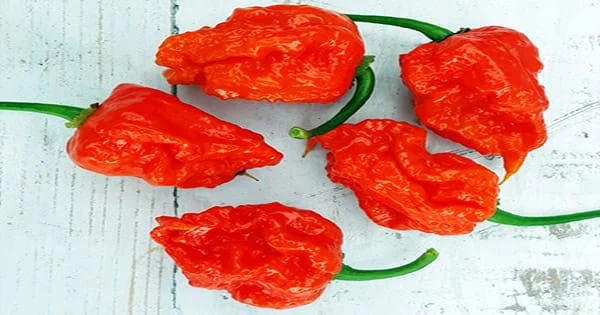Doctors in the journal BMJ Case Reports warn that participating in a spicy chili pepper eating contest might have unintended effects.
After eating a ‘’Carolina Reaper,’ the world’s hottest chilli pepper, a young guy ended up in emergency care with extremely severe episodic headaches. The Carolina Reaper is a Capsicum Chinese plant variety. The pepper is red and gnarled, with a rough texture and a short pointed tail, and was developed by US breeder Ed Currie.
It was proclaimed the hottest chili pepper in the world by Guinness World Records in 2013, beating the previous title holder, the Trinidad Scorpion “Butch T.”

Dry heaves were the first sign he had after eating the chilli. Over the next several days, however, he experienced terrible neck pain and excruciatingly agonizing headaches that lasted only a few seconds each.
His discomfort was so terrible that he went to the emergency room and was checked for a variety of neurological diseases, all of which turned out to be negative.
However, physicians diagnosed him with thunderclap headache due to reversible cerebral vasoconstriction syndrome (RCVS) after a CT scan revealed that many arteries in his brain had constricted.
Given the development of symptoms immediately after exposure to a known vasoactive substance, it is plausible that our patient had RCVS secondary to the Carolina Reaper.
Ed Currie
Thunderclap headaches are intense headaches that appear out of nowhere. This form of headache discomfort does not become worse with time. Instead, as soon as it starts, it becomes a severe and excruciating headache. It’s often referred to as “the worst headache of one’s life.”
Temporary artery narrowing is a symptom of RCVS, which is sometimes accompanied by a thunderclap headache. It can happen as a response to some prescription medications or after using illicit narcotics, and the cause isn’t always evident.
The authors emphasize that this is the first occurrence connected to consuming chilli peppers, despite the fact that cayenne pepper consumption has been linked to abrupt coronary artery constriction and heart attacks.
For cultivating, UK ethnobotanist James Wong classified the pepper as “a fine all-rounder to try at home,” stating that it requires temperatures of at least 18–20 °C (64–68 °F) and that it should be grown in 30–40 cm (12–16 in) pots to limit growth and yield fruit sooner. Two peppers occupy the palm of the hand when completely mature.
“Given the development of symptoms immediately after exposure to a known vasoactive substance, it is plausible that our patient had RCVS secondary to the Carolina Reaper,” writes the authors.
The man’s symptoms went away on their own. After 5 weeks, a CT scan revealed that his damaged arteries had recovered to normal width. The worst part of a thunderclap headache usually happens within 60 seconds. It usually starts to go away around an hour after the peak pain, although it can sometimes persist for a week or more.





